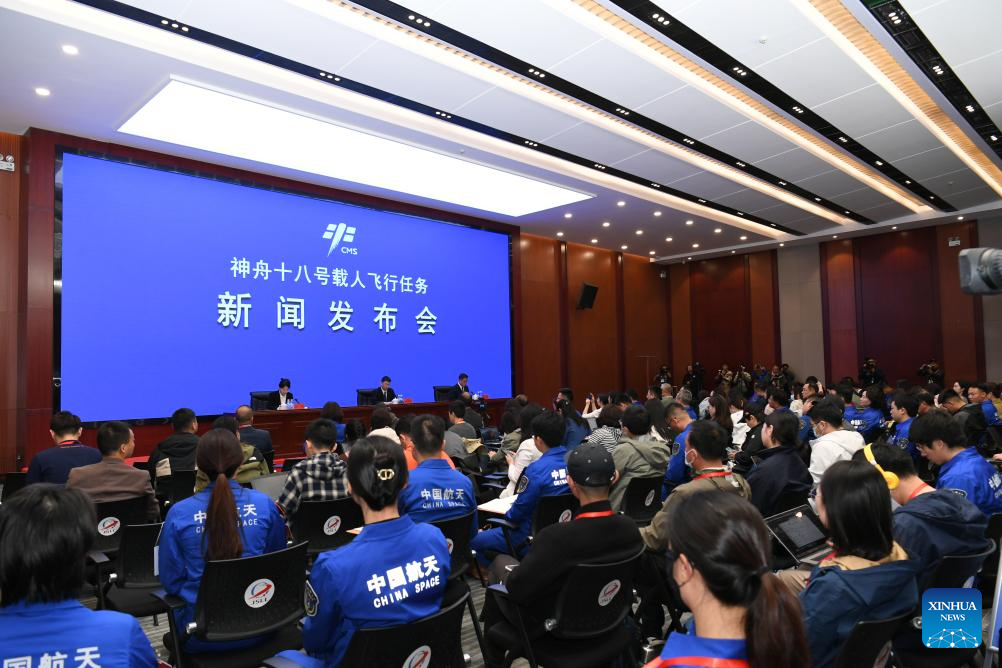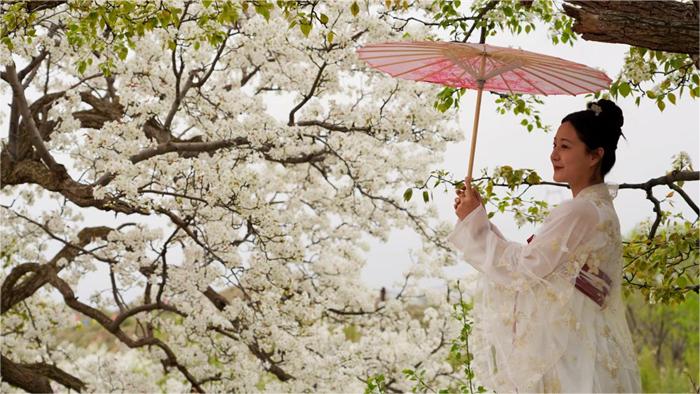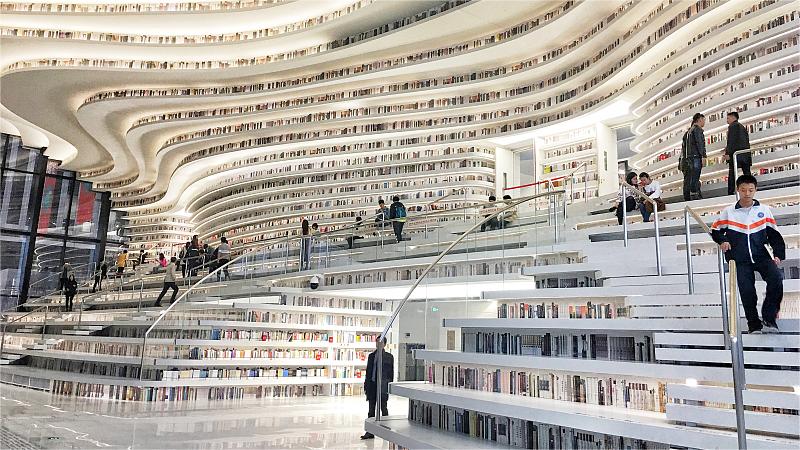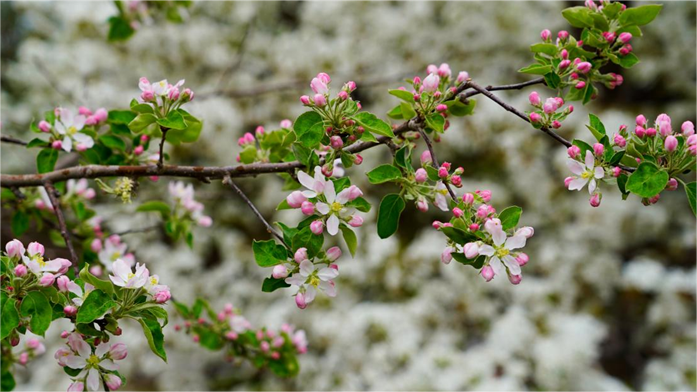China discloses tasks of Shenzhou-18 crewed space mission

A press conference is held in Jiuquan Satellite Launch Center in northwest China on April 24, 2024. Chinese astronauts Ye Guangfu, Li Cong and Li Guangsu will carry out the Shenzhou-18 crewed spaceflight mission, and Ye will be the commander, the China Manned Space Agency announced at a press conference on Wednesday. (Photo by Wang Jiangbo/Xinhua)
JIUQUAN, April 24 (Xinhua) -- The Shenzhou-18 astronauts will perform various in-orbit space science and application tests and experiments as well as multiple space walks during their six-month stay in the country's space station, a senior official of the China Manned Space Agency (CMSA) announced at a press conference on Wednesday.
The Shenzhou-18 crewed spaceship is scheduled to be launched at 8:59 p.m. Thursday (Beijing Time) from the Jiuquan Satellite Launch Center in northwest China.
The crew will utilize the scientific experiment cabinets and extravehicular payloads to carry out more than 90 experiments in the fields of basic physics in microgravity, space material science, space life science, space medicine and space technology, said Lin Xiqiang, deputy director of the CMSA.
During the mission, the country's first in-orbit aquatic ecological research project will be implemented. Using zebrafish and goldfish algae to establish a self-cycling aquatic ecosystem in orbit, the project aims to make to a breakthrough in the cultivation of vertebrates in space, according to Lin.
The world's first in-orbit stem cell study on the plant's stem tips will be made to reveal the mechanism of plant evolutionary adaptation to gravity and provide theoretical support for space cropping, said Lin.
The Shenzhou-18 astronauts will carry out two to three extravehicular activities (EVAs), implement six cargo outbound deliveries via the station's cargo airlock module.
During the EVAs, the astronauts will install space debris protection reinforcements for extravehicular piping, cables and critical equipment, and carry out extravehicular inspections, as appropriate, to further safeguard the safety of the space station, said Lin.
Photos
Related Stories
Copyright © 2024 People's Daily Online. All Rights Reserved.









